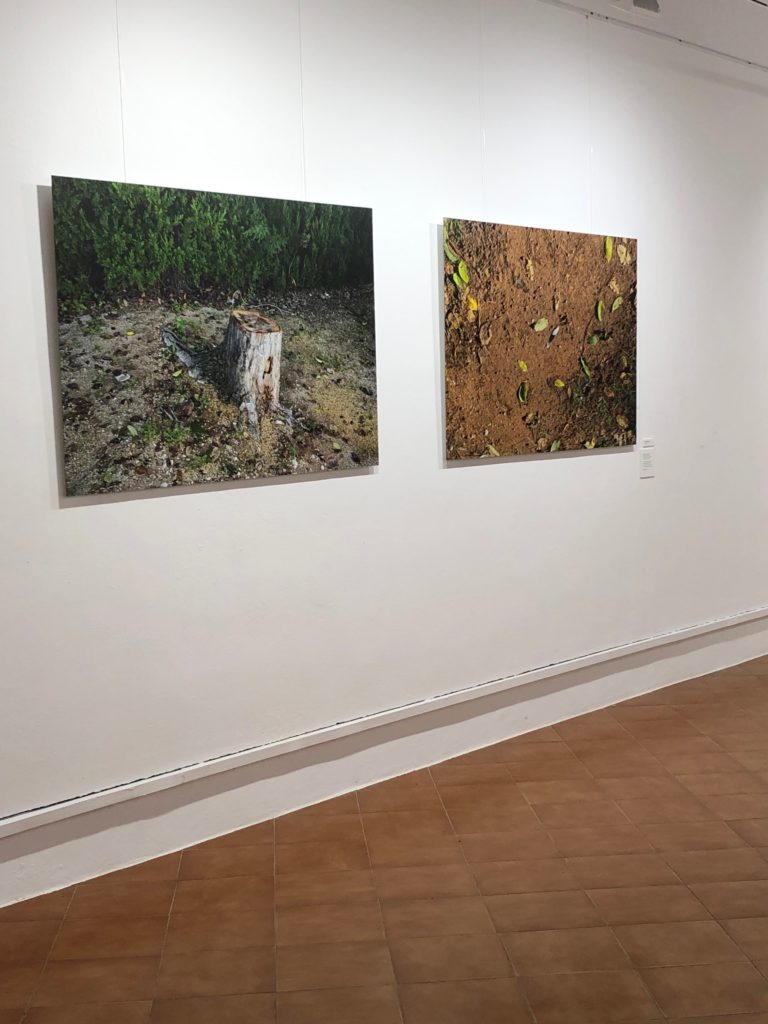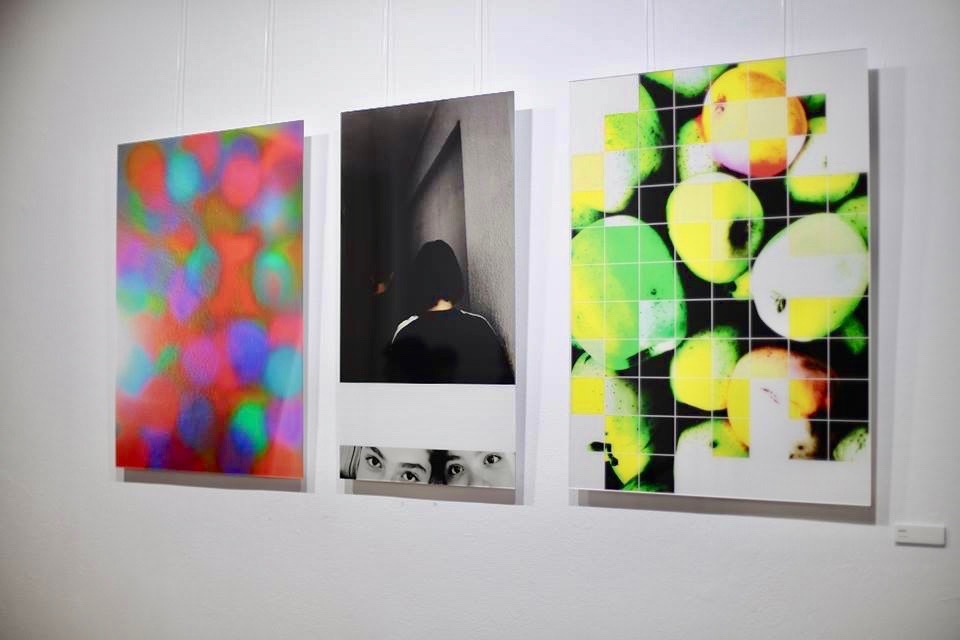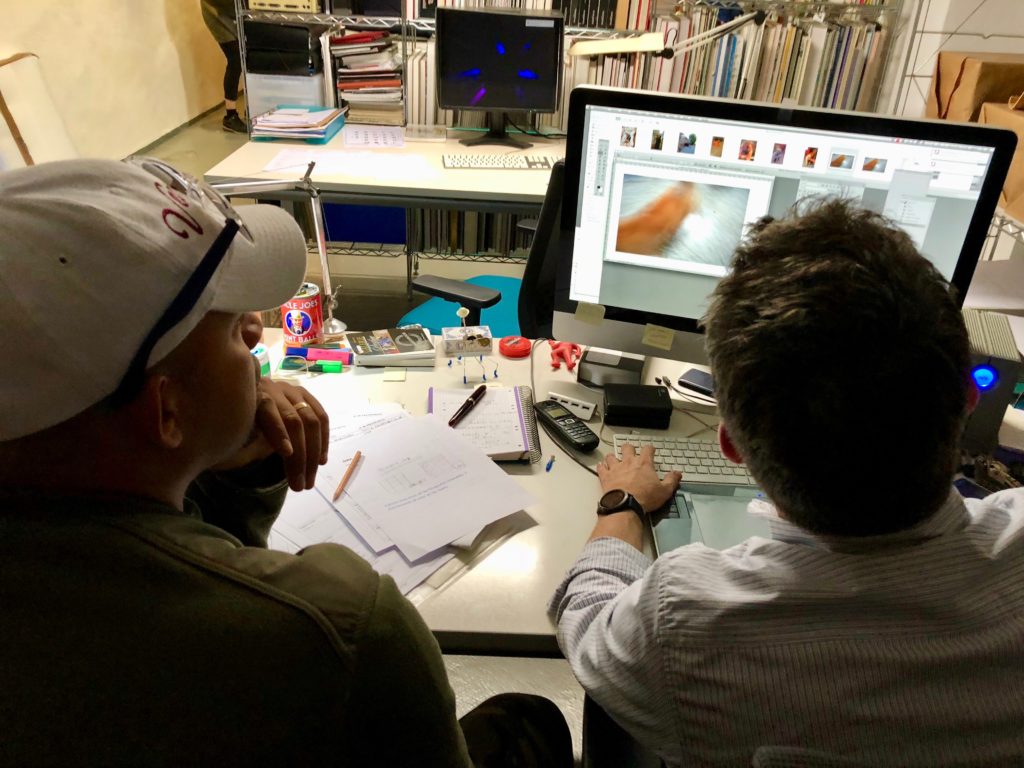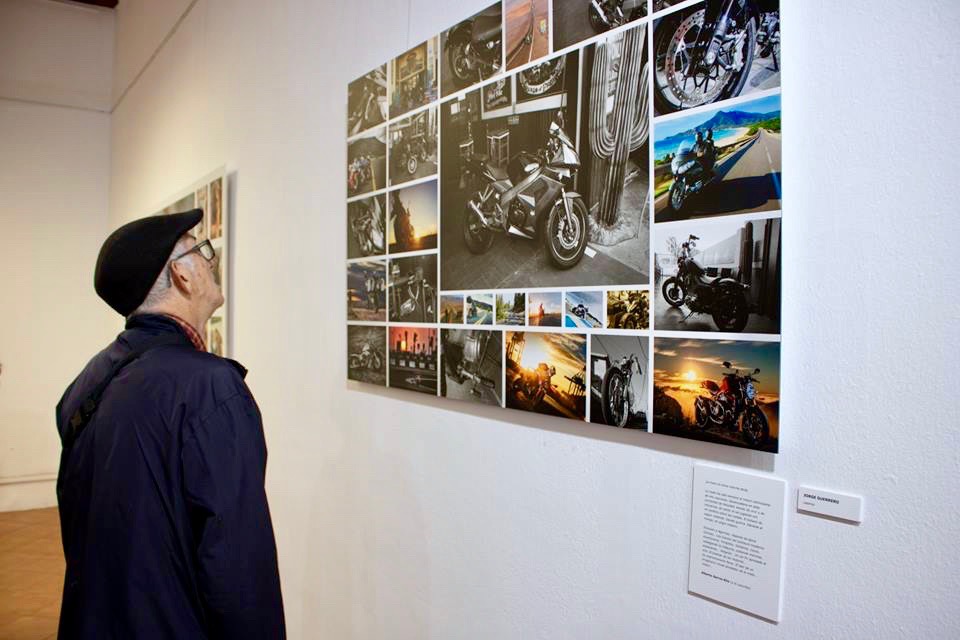Photography can be that soft light that modestly helps us to change things.
Eugene Smith
Creating and communicating means being an active part of the society to which one belongs.
At the Catarroja City Council Social Welfare Service (Valencia), we have displayed an innovative program financed by the Generalitat Valenciana and the European Social Fund for two years. With the objective of developing integrated itineraries for the socio-labor insertion of people in a situation or risk of social exclusion, people who don’t have the socioeconomic resources to access certain services and relationships, with presence in the municipal social services. The Pont Program (Bridge in Valencian) bases its strategy on art and social networks.
CONTEXT
In the middle of the 20th century, photographer Jo Spence realized that photography could be placed in an educational context. She left a rich legacy of ideas and creative paths for exploration. Many of us are professionals who investigate and create projects based on this idea.
Photography places people in reality, allowing them to capture their fragment of life and present and to have an accessible resource to express, communicate, show and expose their human, sensitive and aesthetic concerns with total autonomy.
Today, more than ever, we communicate with images. Social networks establish this new form of communication. We read less and watch more. That’s why expressing oneself through images is a path to literacy, as was learning to operate a computer and surf the net at the time. Visual language is already essential in learning; it’s a fundamental element in the conception of the world and the construction of personal identity.
Photography is the perfect tool to express what is outside from within, a key instrument for promoting creativity and including people from excluded groups. Since it communicates and makes visible realities that most of us don’t see.
The creation of artistic projects generates experiences that strengthen the participants and facilitates new links that help destigmatization, social integration and empowerment.
It was necessary the use photography in the “Programa Pont”.
THE PEOPLE
The “Programa Pont” contains multiple training projects related to job placement, social skills, networks and art. Photography was one of them.
On a Tuesday afternoon, the group attended the first training session out of curiosity or personal interest. There was no prior knowledge of photographic technique, nor access to photographic language. The motivation was simple: share the time in something creative. There was no need, no limits. Yes, there was trust because the program has professionals who care for and bond with the participating people. After all, only from the bond and emotion does change occur.
THE BEGINNING
The starting point was a workshop dedicated to the photographic gaze, where the recognition of one’s gaze was worked on, and based on contemporary art photographic projects. Be aware that everyone is capable of creating images that express their reality, a unique story that allows a space in the world and reaffirms identity.
Reflecting on who I am and what moves me in the world implies a personal commitment, discovery and intention.
Therefore, the second step was to attend and direct attention to our own privacy, to the world we live in and what matters to us. In this way the first ideas for their own photographic project was created.
THE IDEA AND THE PROJECT
Participation and collaboration were fundamental in the development of each project. We encouraged meeting and connection. Photography was the excuse to visit a motorcycle club, think and share ideas, question stigmatizing beliefs and promote creative freedom.
For the development of the author’s own project, they had the opportunity to rethink the content and use of resources, intending to give meaning and coherence to the expression and feel security with their work.
Each participant created their project individually, visiting parks and rock clubs, looking for abandoned animals, browsing online or at home with the family, using the metaphor that artistic language allows and accessing their particular world. In some cases, the title of each project and the text would give clues to the viewer and reaffirm the personal idea.
It has been a project to ask questions, learn, find the essentials of photographic images, create images and look at them, and break the silence about what society expects and who we really are.
All the pieces were created as living and open elements, from the most authentic self. The importance did not reside in the quality of the image but in the space of creation and authenticity where to create and grow.
 Two spectators observe the work of Jorge Guerrero, a project with the title LIBERTAD.
Two spectators observe the work of Jorge Guerrero, a project with the title LIBERTAD.
It was Made with appropriation-adoption of images from the Internet and own images made during the development of the workshop, being coherent with the artist’s concept of ‘artist,’ reinterpreting the motorcycle as a metaphorical and identity element.
Photographs of Lluis García. MELANCOLÍA project.
The artist found inspiration in a park near his house. His gaze was searching for fragments of nature.
Photographs of Gina. FELICIDAD project.
Photographs taken with a mobile phone. Made and manipulated by the author. In the center the gaze of her children. Gina affirms that happiness is created and transformed like her images, which clothe and show her own source of happiness, her children.
Photographs of Sara P. Lahoz. PASIÓN project.
The author could count on Jorge Guerrero’s support to find a space and a musician to develop her idea. The experience and participation were vital.
Photographs of Richard Pitre. AUNQUE NO LO VEAS ESTÁ project.
Richard is a great lover of animals and uses them as a metaphor to talk about himself and the group to which he belongs, those people who are in our country without visibility and with difficulties in accessing the world of work.
THE EDITION
The program had to provide the necessary means for the stories to reach the public. This is a fundamental step in the process: making it visible through an artistic work of quality and power, which implies dialogue, encounter and social transformation, which generates changes, exchanges and movement. That’s why we have the Paco Mora Studio, a space in which they were cared for and listened to as artists, where they had the opportunity to learn, improve each work and select the post-production and printing format; Integrating and dialoguing with the professional who would help them show the work to the public.
The validation of a professional like Paco Mora was vital in the process of empowering, arming himself with the courage, security and confidence necessary to show himself.
Richard Pitre working with Paco Mora
THE EXHIBITION
Showing the work has given the participants recognition of the job done. The exhibition space was the Vivanco Room, located in the Catarroja Town Hall.
The experience was complemented by the attention to the spectators, in the guide through the work itself, allowing the participants to explain their work publicly.
The exhibition has allowed the recognition of the process through the gazes of visitors, people outside the context of the participants, and witnesses of the work who give direct feedback on the impact of the images, which by working with universal themes, promote the feeling of neighborliness, roots and membership in society. The exhibition experience generates empathy and recognition, cancels prejudice, and denotes.
It’s important to have support from social networks and the media. The visibility, articles, press or radio give strength and shine to the project and empower its participants.
Assembly day at the Catarroja Town Hall.
CONCLUSION
The people who have participated in this project ooze sensitivity, humanity and respect. There are 5 projects of 5 residents of Catarroja, who have worked and thought about a theme that moves them, that involves them from their own authenticity. Their projects speak of freedom, passion, happiness, visibility, and melancholy- topics that are important to them, but also for all the viewers we watch.
Gina, Sara P Lahoz, Richard Pitre, Jorge Guerrero and Lluis García are proof that the gaze develops on one’s own stories and experiences, in search of one’s own authenticity. They make us look at their photographs, but also that we look at them, as brave people who dare. The five are part of the program; they seek their labor and social integration; working with them has been easy; they are attentive, hard-working and creative people. They have enjoyed the experience, they have been important in its concept and development, and they reside in their own work. The vital experience dwells in the photographic experience.
Photography places people in reality, allowing them to capture their fragments of life and present and to have an accessible resource to express, communicate, show themselves and expose their human, sensitive and aesthetic concerns with total autonomy.
Photography is an essential tool for creating identity, and narratives about one’s life. The image is a metaphor and it’s communication, it has the super-power to educate, integrate and transform.
This exhibition talks about the need to break the silence, to give light and make visible the reality of people in the process of integration, anonymous artists or ordinary people that we all are. The images show a normalizing and integrating nuance, an understanding of reality from the perspective of its own protagonists. Photography has been the excuse to launch an inclusive society, integrating from overcoming and the ability to create.
We are convinced that artistic education enables personal and social transformations. In this sense, photography can intensely promote social change.
The goal doesn’t end here; more and more photography as a tool for social inclusion allows us to develop coherent and committed projects that build a better world.
-“A nice afternoon. I felt very comfortable, a very nice experience to repeat.”- Luis García
-“This project made me see my world in color, not just in black and white. It has made me see the importance of the feelings that you can find in a single photograph. It has made me grow as a person and has given me more confidence. I have realized that I like photography, and I would like to have the opportunity to continue with this project in the future. It has been a special and unique afternoon.” – Gina
-“A wonderful afternoon, a brave project that shows that where there is a will, there is a way. With Amparo at the head, we wanted and could, from then on, everything is possible… Thank you.” – Jorge Guerrero
IT’S POSSIBLE BY…
The Social Welfare Service of the Catarroja City Council, Nuria Blanch, Francisco Gómez and Mª José Carretero, who have trusted in this project and my work.
Alba Mompó, Julia Martínez and Miquel Miñana. Psychologists and social workers expressly hired for the Programa Pont. All of them invest illusion, time and work, they believe in what they do and integrate people into the workplace.
The Estudio Paco Mora, the printer of these photographs, turns what he touches into art.
Javier Sancho Boils for accompanying Sara and Jorge’s project. Pablo Llàcer and Lluis Raga for photographing the exhibition.
The people who are the protagonists of the exhibition project that they have entrusted, have allowed themselves to be accompanied and have created culture and art from the generosity of sharing their own means.
Cómo citar este artículo
Al citar, reconoces el trabajo original, evitas problemas de plagio y permites acceder a las fuentes originales para obtener más información o verificar datos. Asegúrate siempre de dar crédito y de citar de forma adecuada.
How to cite this article
By citing an article, you acknowledge the original work, avoid plagiarism issues, and allow access to the original sources for further information or data verification. Make sure to always give credit and cite appropriately.
Amparo Muñoz Morellà. (November 18, 2018). "Photography as a tool for social integration". ANDANAfoto.com. | https://andanafoto.com/en/photography-as-a-tool-for-social-integration/.
1 Comment
Leave a Reply
You must be logged in to post a comment.













Do you have any projects that use photography as a tool for social inclusion that you would like to share?